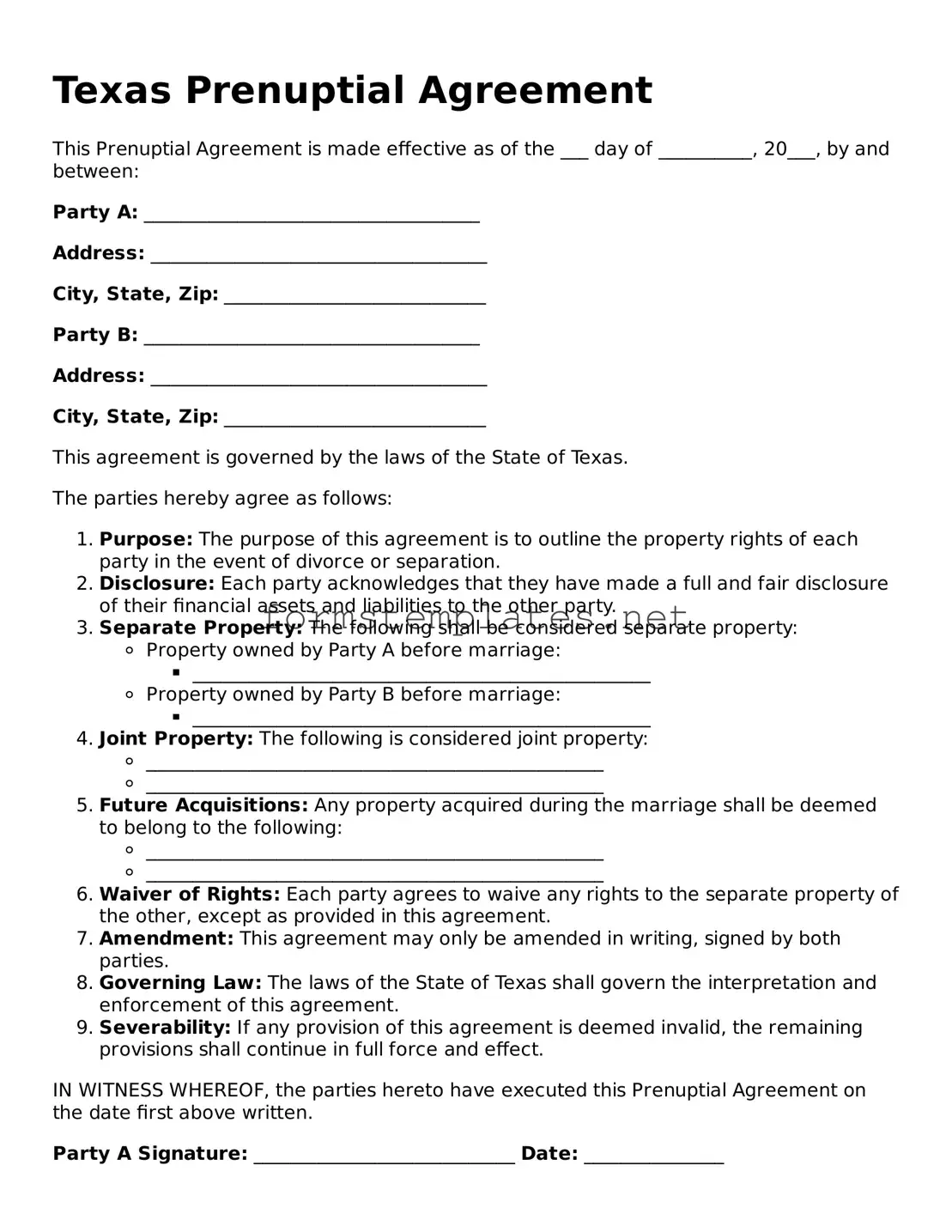Texas Prenuptial Agreement
This Prenuptial Agreement is made effective as of the ___ day of __________, 20___, by and between:
Party A: ____________________________________
Address: ____________________________________
City, State, Zip: ____________________________
Party B: ____________________________________
Address: ____________________________________
City, State, Zip: ____________________________
This agreement is governed by the laws of the State of Texas.
The parties hereby agree as follows:
- Purpose: The purpose of this agreement is to outline the property rights of each party in the event of divorce or separation.
- Disclosure: Each party acknowledges that they have made a full and fair disclosure of their financial assets and liabilities to the other party.
- Separate Property: The following shall be considered separate property:
- Property owned by Party A before marriage:
- _________________________________________________
- Property owned by Party B before marriage:
- _________________________________________________
- Joint Property: The following is considered joint property:
- _________________________________________________
- _________________________________________________
- Future Acquisitions: Any property acquired during the marriage shall be deemed to belong to the following:
- _________________________________________________
- _________________________________________________
- Waiver of Rights: Each party agrees to waive any rights to the separate property of the other, except as provided in this agreement.
- Amendment: This agreement may only be amended in writing, signed by both parties.
- Governing Law: The laws of the State of Texas shall govern the interpretation and enforcement of this agreement.
- Severability: If any provision of this agreement is deemed invalid, the remaining provisions shall continue in full force and effect.
IN WITNESS WHEREOF, the parties hereto have executed this Prenuptial Agreement on the date first above written.
Party A Signature: ____________________________ Date: _______________
Party B Signature: ____________________________ Date: _______________
Witness Signature: ____________________________ Date: _______________
Witness Signature: ____________________________ Date: _______________
